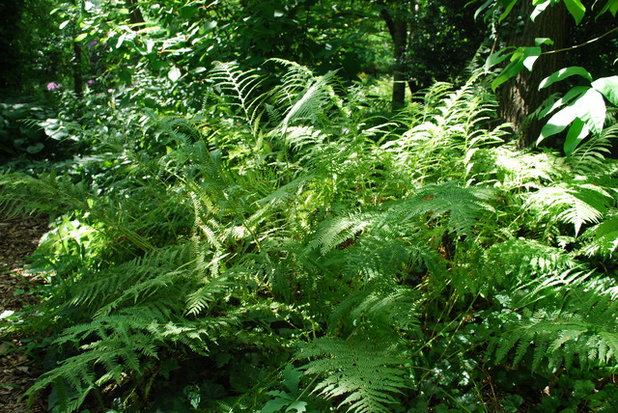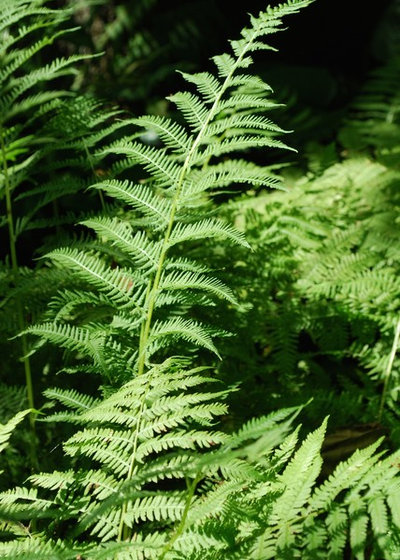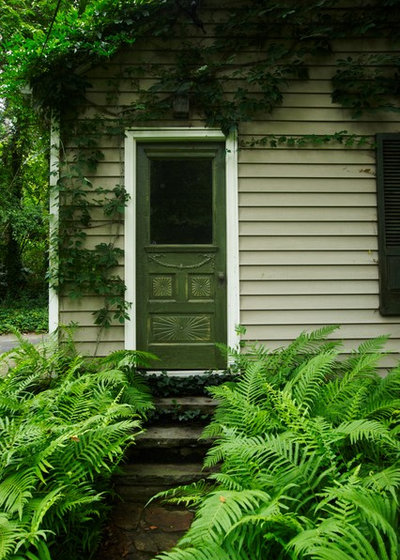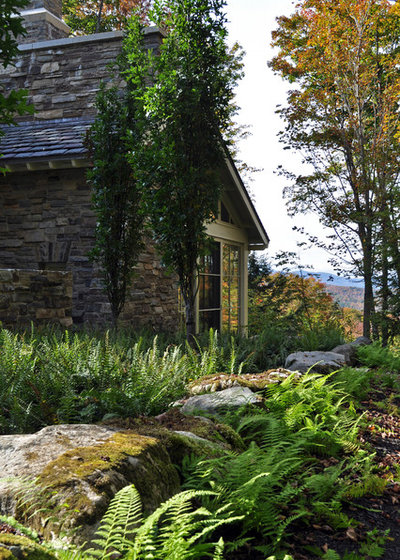Within the world of ferns, some are thugs, spreading aggressively without asking permission, and some are shy introverts, sitting quietly without drawing attention to themselves. Then there is the lady fern. Well-mannered as she is, she brings beauty to whatever garden room she enters and can hold her own in the landscape. She earns her place. Let’s take a look.

Jay Sifford Garden Design

Jay Sifford Garden Design
Botanical name: Athyrium filix-feminaCommon name: Lady fern
Origin: Found throughout the United States, northern Europe and Asia
Where will it grow: Hardy to -30 degrees Fahrenheit (USDA zones 4 to 8; find your zone)
Water requirement: Consistently moist soil is best for optimal growth
Light requirement: Partial to full shade
Mature size: Up to 3 feet tall and 2½ feet wide
Benefits and tolerances: Deer and rabbit resistant; affected by few insects and diseases; grows well in heavy shade and wet soils where plant choices are limited
Seasonal interest: This deciduous fern sports fine lace-like fronds that emerge bright green in mid-spring; the lady fern is a strong performer until frost
When to plant: Spring or fall is best
Distinguishing traits. The fronds of the lady fern contain 20 to 30 leaflets with narrow pointed tips. The plant itself is vase-shaped and commands attention in the woodland garden.
One point of interest is that the lady fern has been crossed with the Japanese painted fern (
Athyrium niponicum var
pictum, zones 3 to 8) to create one of the very few hybrid ferns on the market, the Ghost fern (
Athyrium ‘Ghost’).

Troy Rhone Garden Design
How to use it. The lady fern, like most other ferns, shows itself to best advantage when planted en masse. It makes a well-behaved ground cover in the shade garden, looking particularly striking beneath the high canopy of mature trees, where shafts of available sunlight highlight its delicate texture and light green coloration.
Companion plants would be Lenten roses (
Helleborus orientalis, zones 4 to 9), rhododendron (
Rhododendron spp and cvs, zones 4 to 8) and Japanese maples (
Acer palmatum cvs
, zones 5 to 8).

Shepard Butler Landscape Architecture
Consider planting the lady fern in free-form blocks or drifts, connected to and fading into drifts of other fern species with contrasting foliage such as the Christmas fern (
Polystichum acrostichoides, zones 3 to 9) or the northern maidenhair fern (
Adiantum pedatum, zones 3 to 8). This type of installation gives an appearance similar to that of a jigsaw puzzle and is breathtaking in a large woodland area. I am in the process of doing an installation of this type in my new woodland garden, using a dozen fern species of contrasting texture and form.
Planting notes. Lady fern does best planted in moisture-retaining soil amended with decayed organic matter. The addition of mushroom compost or composted cow manure in the hole at the time of planting will greatly benefit this fern.
More:Set Your Shade Garden Aglow With Light
Browse more ferns on Houzz





